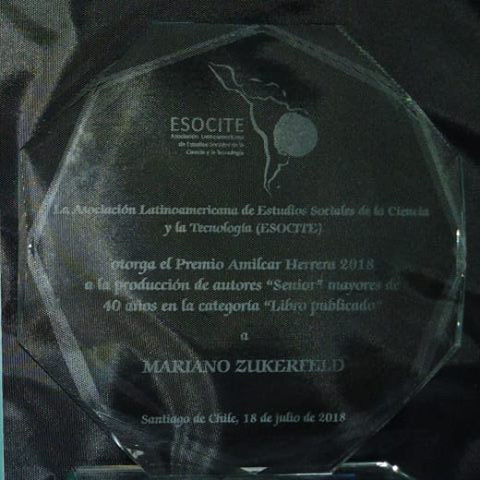Here in an extract from his editorial Doug Specht in the latest issue* of Westminster Papers in Communication and Culture reflects on how space has not gone away or been ‘annihilated’. He considers how communication theories may help understand a world in which maps of all kinds are being reconfigured with the aid of the users and suppliers of Big Data as space in all dimensions is being mediated and reshaped.
Late twentieth century communication and information technologies have produced such a blurring of what is real and what is representation that the two can no longer be distinguished (Corner, 1999), leading to persistent questions over how human behaviour is constituted through space and time, and within specific social contexts (Dear, 1988). Our mappings of the world, be they through cartographic representations and data visualizations (Space-in-media), or mediated senses of place (Place-in-Media, and Media-in-Place), are in-between the virtual and the physical. A distinction not to be confused with a distinction between real and fake, ‘as we would not claim that our bodies are real while our minds are fake’ (Smith, 2017: 30). Did you find the world or did you make it up? asked Winnicotts (cited in Corner, 1999), a salient question indeed. The information super-highway agenda of the 1990s was designed to change the very fabric of society (Robins, 1997), to create a homogenized flow of communications transcending geography (Greig, 2001). This post-modern condition of ‘space-time compression’ (Harvey, 1989) would annihilate space. Yet, space has not disappeared, but has re-established itself in new spheres, created of ever larger data, and increasingly mediated, and must then be understood through the use of semiotic and communication theories, such as the Marxist spatial frameworks of Castells and Lefebvre, or the Ideologiekritik of the Frankfurt School (Lagopoulos, 1993). The postmodern creates tensions between all theories in an attempt to best understand the conditions of existence, at its core, perhaps, lies the dialectic between space and society; a geographical puzzle in which structures, institutions and human agents operate on different scales to define spatial patterns in any given locale (Dear, 1988). The individual does not disappear in the midst of the social effects caused by the pressures of the masses, but is instead affirmed (Lefebvre, 1991). It is seeing that establishes our place in the surrounding world; we explain that world with words, but words can never undo the fact that we are surrounded by it, as Fuchs (2018) states: ‘means of communication are (just like social space) means of production through which humans produce social relations and therefore also social space’ (p. 19). The relation between what we see and what we know is never settled. Each evening we see the sun set. We know than the earth is turning away from it. Yet the knowledge, the explanation, never quite fits the sight (Berger, 1972/2008). While human geography has always been a maze of diverse interests (Dear, 1988), the use of Geographic Information has changed dramatically in the past decade, and continues to do so; increasingly it is used in mediated practices, to shape stories, to transcend boundaries, to develop new ethereal networks, as well as to produce maps. But even in those maps, users themselves are being encouraged to crowdsource data, be that to add to the ‘usefulness of the map’ or to create counter maps. Data has become the standard way in which the world is ordered (Thatcher and Dalton, 2017), with those that link location and temporal information being seen as fixes for capitalism’s tendencies towards over-accumulation (Greene and Joseph, 2015). As the scholars in this issue demonstrate, there is much to be gained from the combining of communications theories and those from the geographic disciplines. Bringing the two together allows for an alternate, nuanced, and a spatially grounded approach to envisioning the myriad ways in which the digital age mediates social, economic and political experiences and, in particular, in the increasingly technologically informed media and communications sector.
[*’GEOGRAPHY AND COMMUNICATIONS‘ the full open access issue can be viewed or downloaded at the WPCC website ]
REFERENCES
Berger, J. (1972/2008). Ways of Seeing, . London: Penguin UK.
Corner, J. (1999). The Agency of Mapping: Speculation, Critique and Invention. In: Dodge, M., Kitchin, R., & Perkin, C. (eds.), The Map Reader: Theories of Mapping Practice and Cartographic Representation, 213–252, Chichester: Wiley-Blackwell.
Dear, M. (1988). The postmodern challenge: Reconstructing human geography. Transactions of the Institute of British Geographers, 262–274. DOI: https://doi.org/10.2307/622990
Fuchs, C. (2018). Henri Lefebvre’s theory of the production of space and the critical theory of communication. Communication Theory, 1–22. DOI: https://doi.org/10.1093/ct/qty025
Greene, D. M., & Joseph, D. (2015). The digital spatial fix. tripleC: Communication, Capitalism & Critique, 13(2): 223–247. DOI: https://doi.org/10.31269/triplec.v13i2.659
Harvey, D. (1989). The Condition of Postmodernity: An Enquiry into the Origins of Social Change. Malden, MA: Blackwell. DOI: https://doi.org/10.1191/030913298669028680
Lagopoulos, A. P. (1993). Postmodernism, geography, and the social semiotics of space. Environment and Planning D: Society and Space, 11(3): 255–278. DOI: https://doi.org/10.1068/d110255
Lefebvre, H. (1991). The Production of Space. Blackwell: Oxford
Robins, K. (1997). The new communications geography and the politics of optimism. Soundings 5, 191–202.
Smith, T. G. (2017). Politicizing Digital Space. London: University of Westminster Press. DOI: https://doi.org/10.16997/book5
Thatcher, J., & Dalton, C. M. (2017). Data Derives: Confronting Digital Geographic Information as Spectacle. In: Briziarelli, M., & Armano, E. (eds.), The Spectacle 2.0: Reading Debord in the Context of Digital Capitalism. London: University of Westminster Press. DOI: https://doi.org/10.16997/book11.h


